Sustainable platform of sensing and irrigation automation based around the Nordic's Thingy: 53 with predictive analysis.

Things used in this project
Hardware components
Hand tools and fabrication machines
3D Printer (generic)
Story
Story:
This will be the third iteration of two past projects;
The first one was Agrofox: https://www.hackster.io/107329/aggrofox-large-scale-and-urban-agriculture-iot-solution-8155fe
The second one is AgroHelium: https://www.hackster.io/Edoliver/agrohelium-urban-agriculture-aiot-solution-d8fbf4
Our intention this time is to get as close as possible to a functional prototype (the step before Mass-manufacturing), of course, with several upgrades along the way!
Introduction:
In recent years urban agriculture has made its mark in popular culture as an alternative to industrial farming. It offers several benefits and also helps to solve some of the most nefarious problems that we will have going forward regarding food supply, the growing population and the new trends favoring organic, naturally grown food. Despite all that it has been faced with a plethora of problems including its access to water, pollution concerns, and high maintenance costs. In addition to those most farming methods are very empirical in nature and it has been just a few years since the Internet of Things and other Industry 4.0 technologies have reached Agriculture. And among most of those, its degree of adoption is quite lackluster. Urban agriculture needs a cheap and readily available solution, for it to be sustainable.
Business Insider Singapore.
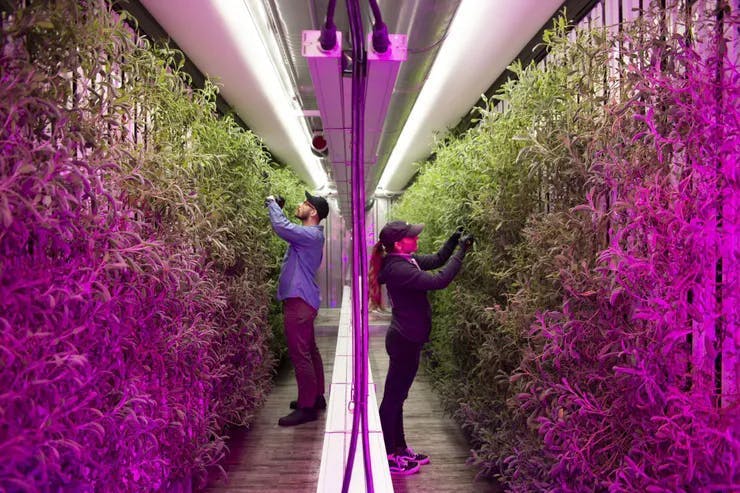
Kimbal Musk (Elon's brother) is hyped about this.
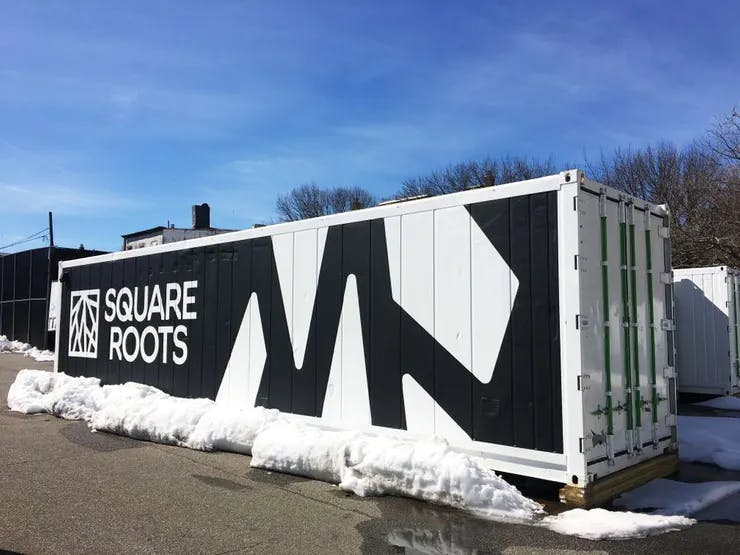
Problem:
IF we want to have the most impact with a project regarding sustainability, namely Water sustainability we have to focus on the industry that requires more of it, which is Agriculture.
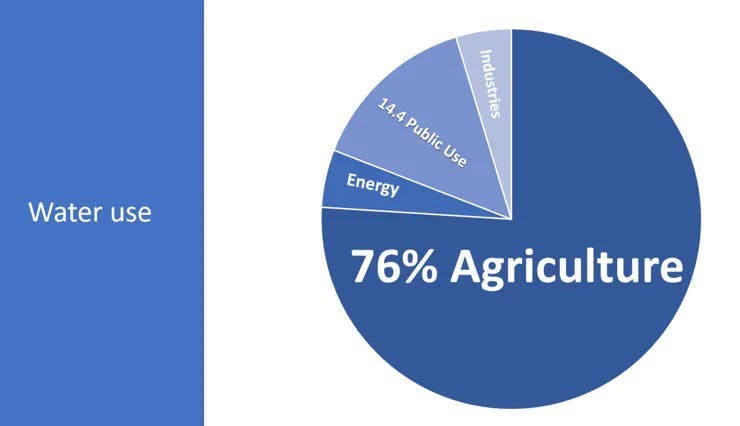
And regarding that the main problem in agriculture is actually Water. Most countries have their periods of drought, but as years become even hotter because of climate change, drought greatly affects several regions. California is an example of this:
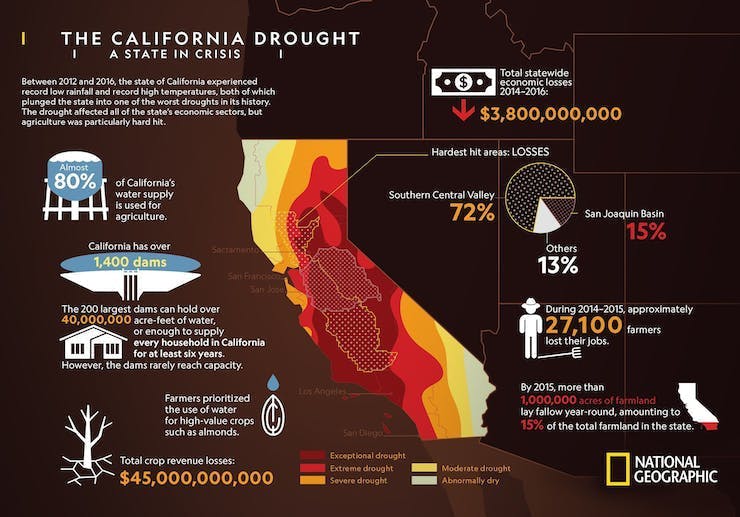
So we get into a $42 Billion USD problem adding all the parameters. Industry 4.0 tools and automation are greatly needed to attack this.
Here comes a new challenger!
After COVID-19 hit most industries were shown a loss in revenue of almost 30%. The pandemic is impacting global food systems, disrupting regional agricultural value chains, and posing risks to household food security.
International Labour Organization.
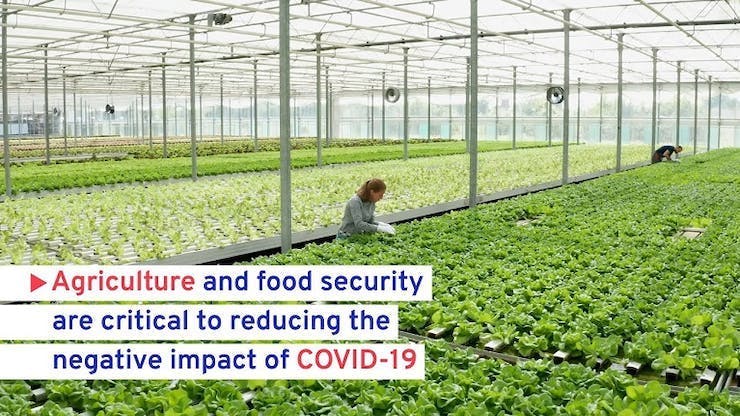
Now we have to take much more seriously the fact that Urban Agriculture can provide us a "cushion" during all this problematic time.
Now, my personal problem
This is a photo of one of the Tomato fruits I have in my backyard which I cannot continuously check. Sometimes I am away or very busy, and I tend to neglect its care. Another thing is regarding collecting fruit at the proper moments because they may become uneatable at some point. The problem regarding water can be taken care of if I automate irrigation and some more things.
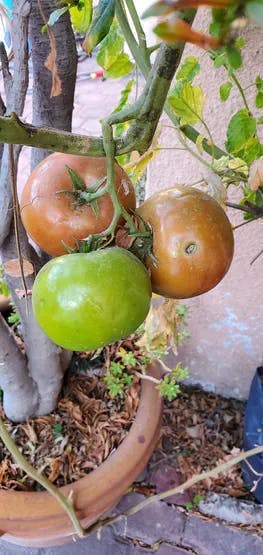
Solution:
Our solution to the problem will be to create a sustainable platform of sensing and irrigation automation with predictive analysis via the Thingy53 instead of relying entirely on cloud and we will be connecting everything with AWS IoT Core and BLE Gateway. With one objective in mind: SAVE WATER.
Using temperature with humidity, soil moisture and soil temperature sensors, we will obtain sensor data. BLE technology has been chosen because the characteristics of low power are excellent for remote areas and cities alike.
Then using the Openweathermap API and ReactJS we will create a Dashboard and notification capabilities.
We will connect to our RPi Gateway via the BLE and send sensor data to AWS IoT. Once we have the data at AWS, we will then send it to a web application. We made it possible to develop almost any application with the obtained data. Examples of these applications:Generate databases of our crops and their conditions. Do data analysis to obtain predictive models in the long term. Water automation systems with the data obtained (as we will do in this project).
We then will make a Dashboard with the data obtained for the complete and simple visualization of the data. For the application, we will perform data crossing with the OpenWeatherMap API, to perform the control of an electrovalve connected to another microcontroller. The data crossing obtained is used to check if that day is going to rain, and thus not use irrigation water in crops. Also if the system detects that water is needed, in the field by the humidity sensors, the irrigation system is turned on. In turn once a day an email will be sent to the farmer with the general information of his field or he can check anytime on his dashboard. Also everytime the irrigation system is online, a notification will be sent.
Connection Diagrams:
System Diagram:
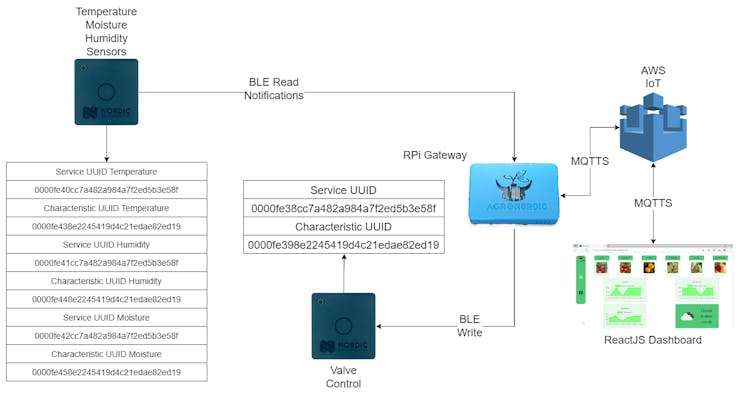
Temperature, Humidity and Moisture Device:
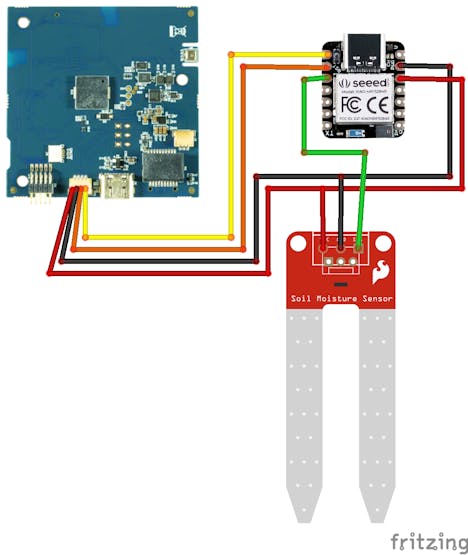
Electro Valve:
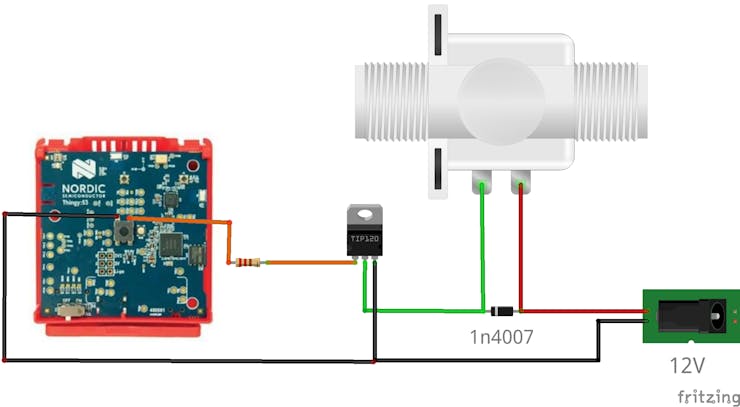
Temperature, Humidity and Moisture Device:
Main sensor circuit.
Bill of Materials:
Thingy53. XIAO nRF52840. Capacitive Soil Moisture Sensor

Real implementation:
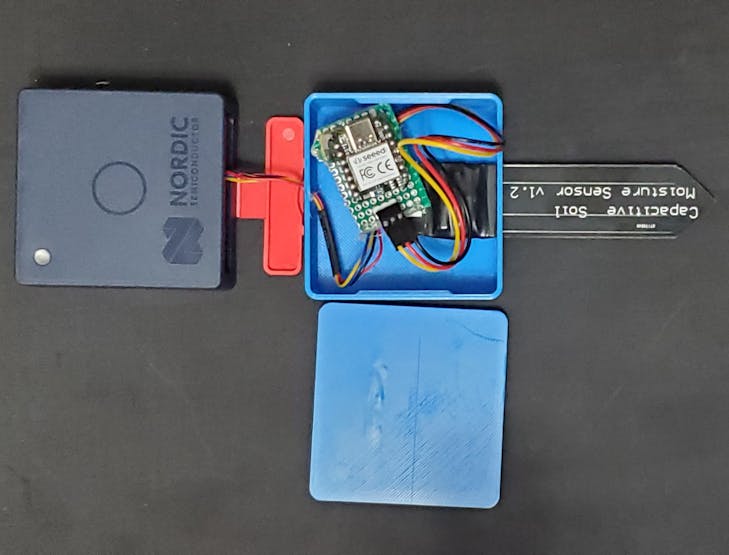
The code for this implementation using nRF Connect is:
https://github.com/altaga/AgroNordic/tree/main/Sensor_Station
All the BLE configuration that the device has is as follows.
Device Name: SENSORST Service Temperature UUID: 0000fe40cc7a482a984a7f2ed5b3e58fCharacteristic UUID: 0000fe438e2245419d4c21edae82ed19Service Humidity UUID: 0000fe41cc7a482a984a7f2ed5b3e58fCharacteristic UUID: 0000fe448e2245419d4c21edae82edService Moisture UUID: 0000fe42cc7a482a984a7f2ed5b3e58fCharacteristic UUID: 0000fe458e2245419d4c21edae82ed19
The part of the code that sends the data as BLE notifications for each of the sensors is:
err = bt_gatt_notify(NULL, &stsensor_svc.attrs[2], &temp, sizeof(temp));
if (err)
{
LOG_ERR("Notify error: %d", err);
}
else
{
LOG_INF("Send notify ok");
temp = (temp == 0) ? 0x100 : 0;
}Code: URL: https://github.com/altaga/AgroNordic/blob/main/Sensor_Station/src/main.c
Valve Module:
Once the main circuit is completed, make the automated irrigation valve.
Bill of Materials:
Thingy53.TIP12012v Source.Solenoid Valve Nc 1/2.Diode 1N4007.1 Resistances of 2.2kohm.Cable, Solder, Jump wire or similar.
Our real implementation:

The code for this implementation using nRF Connect is:
https://github.com/altaga/AgroNordic/tree/main/Valve_Code
All the BLE configuration that the device has is as follows.
Device Name: ElectroValveService UUID: 0000fe38cc7a482a984a7f2ed5b3e58fCharacteristic UUID: 0000fe398e2245419d4c21edae82ed19The part of the code that controlled the status of the solenoid valve is as follows.void led_update(void)
{
if (!led_ok) {
return;
}
led_state = !led_state;
LOG_INF("Turn %s LED", led_state ? "on" : "off");
gpio_pin_set(led.port, led.pin, led_state);
}Code: URL: https://github.com/altaga/AgroNordic/blob/main/Valve_Code/src/led_svc.c
RPi Gateway:
Finally, we are going to use an RPi as a BLE gateway to send the data directly to AWS IoT.
Real implementation:
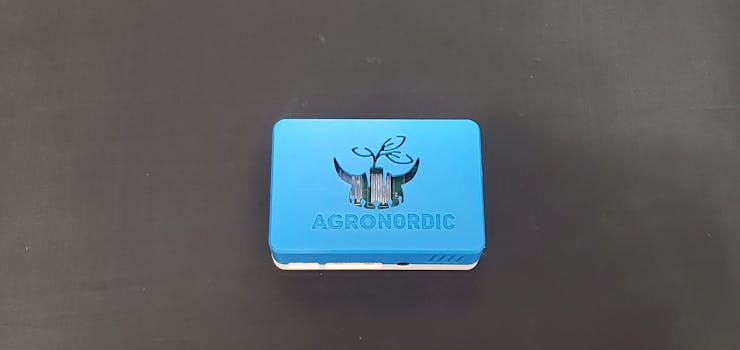
The code for this implementation using nRF Connect is:
https://github.com/altaga/AgroNordic/blob/main/Gateway/index.py
In this implementation, an MQTT Client was made in the RPi, which according to the results it is reading from our devices and sending these to AWA IoT core in addition to being able to control the value by writing a value in the "/changevalve" topic.
RPi - AWS IoT Integration:
Being able to obtain the data from the sensors does not make any sense if you do not have a cloud service that obtains the data and uses it for some purpose, in this case AWS.
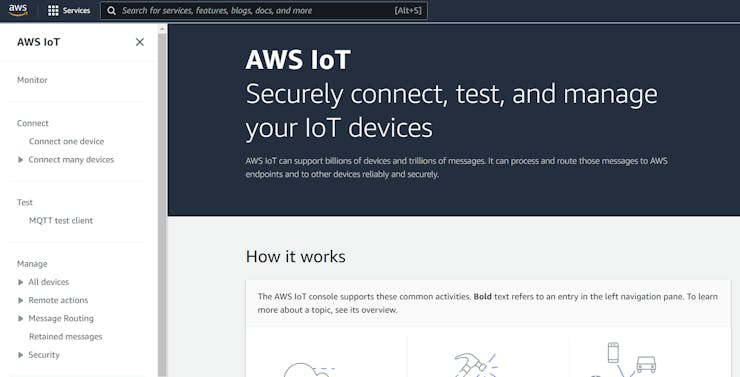
In order to send the data from our gateway to AWS IoT, we use its MQTTS service, for that we will have to create a Thing on the platform.

You can name the Thing whatever you want.
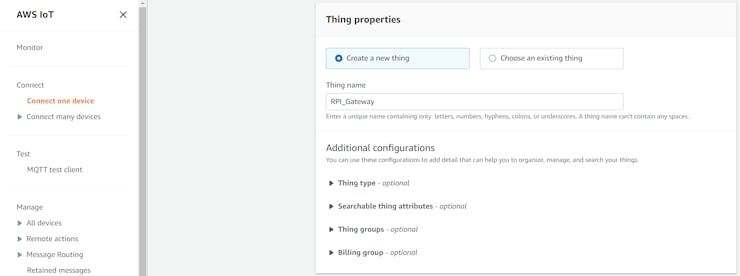
The important part of this process will be getting the thing's certificates, but if you want to experience more with the AWS IoT SDK, you can select the OS of your choice.
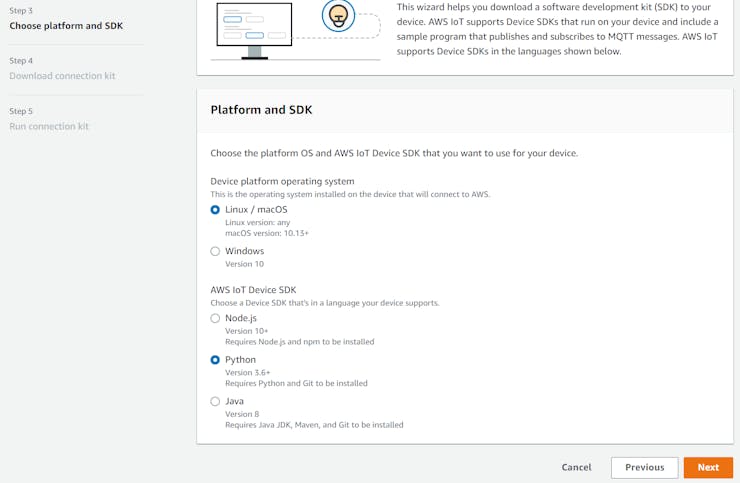
Once the SDK is created, we will download it to our machine.
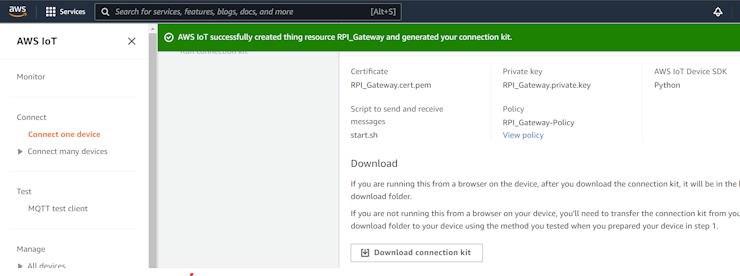
The most important step here is to obtain these certificates, since they will not allow us to connect correctly to AWS IoT.

Now with these certificates you can use the MQTTS of the RPi gateway correctly.
Dashboard:
For our dashboard we made a simple web page with ReactJS, we decided that the green color was the most representative of a sustainability challenge.
For the graphics page, we made a crop selector, where we can see the real-time data of each crop, the data in the graphics is sent directly from AWS IoT Integration.
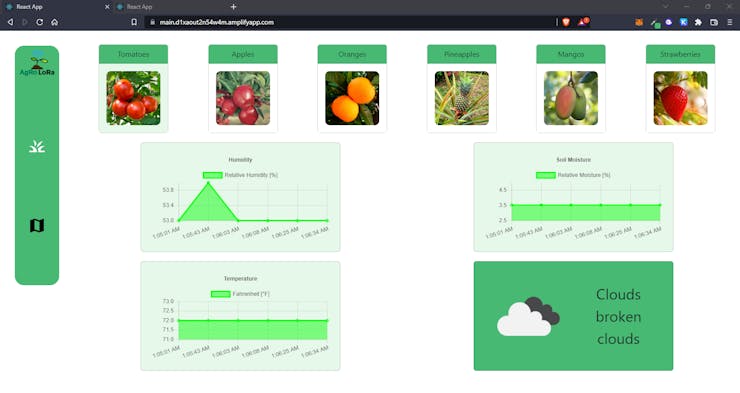
We also added a page, where we will see the location of our devices, in order to better track the weather.
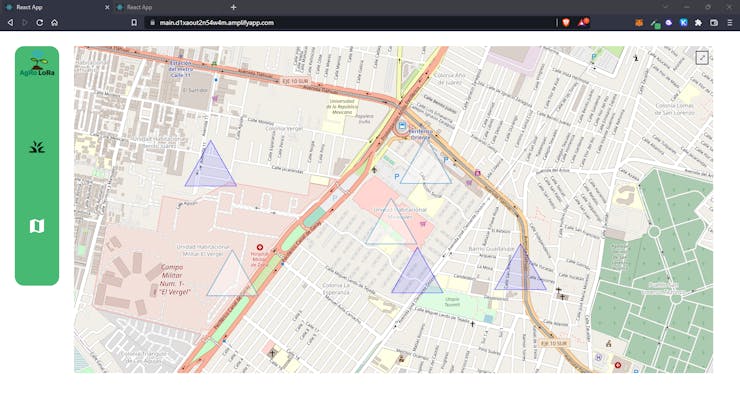
AWS Amplify:
We are going to use the Amplify service to make the deployment of our application, but this requires having a repository where we have our code to be able to carry out the CI / CD process, we can use any of the following Git repository hosting services.
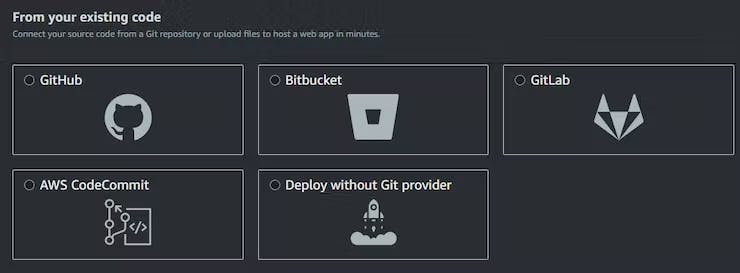
However, to maintain a better organization of the apps deployed on AWS, we will use Github with Private Repository.
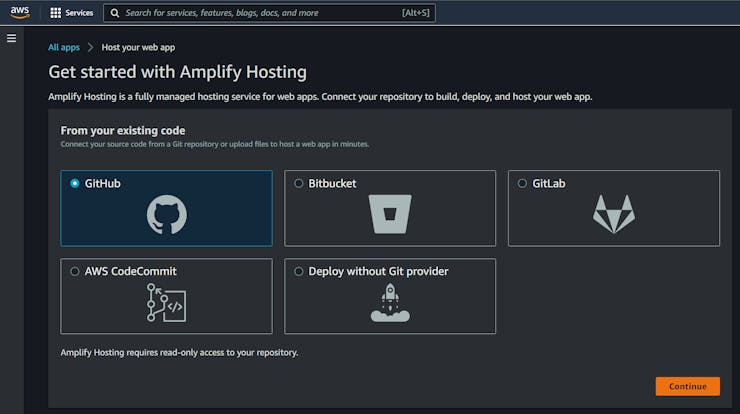
We select the repository that we create with our code.
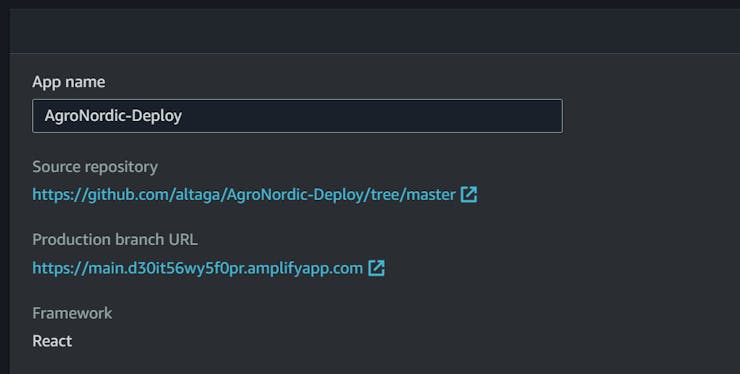
Since it is a deployment with ReactJS the Build settings are configured automatically.
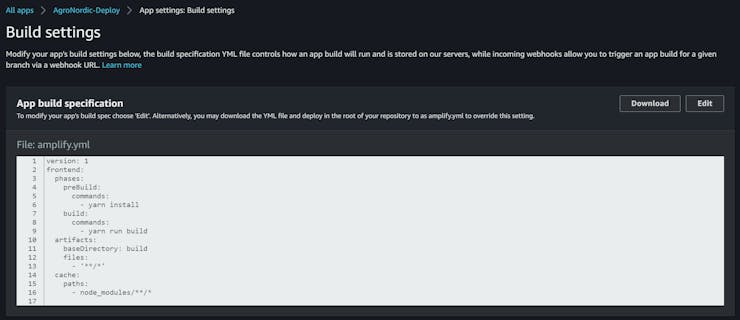
Once we finish creating the WebApp, all the steps of the Ci / CD cycle should appear and if everything went well they should look like this.

The result will be a link similar to this one.
WebApp: https://main.d30it56wy5f0pr.amplifyapp.com/
Irrigation system via Openweathermap Forecast and Thingy53.
We have to explain first the why's before the know how's.
The use of tracking the forecast of the weather is the main purpose of the project itself, that is to optimize water usage.
What use there is of having a sensor that tracks that the soil is dry and activate an irrigation system with that info, but it is going to rain that same day?
We can save a lot of water simply by using the weather forecast systems available to notify our platform that it is going to rain and stop from using water that day.
And of course we want to automate everything.
Without further ado:
Get to: https://openweathermap.org/ and Sign up. After that then simply go to Sign In and click on API Keys, then copy the API KEY.
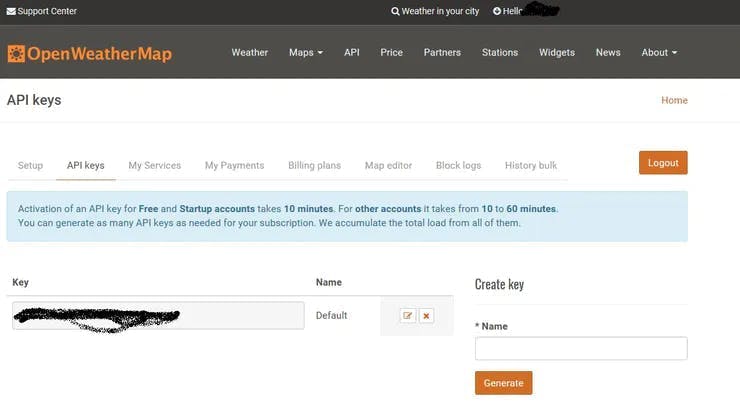
In this case the dashboard is consuming the OpenWeatherMap API and since it is in turn connected to the AWS IoT core, it is capable of receiving data from the thingy53 and controlling with a click the activation or deactivation of the valve, depending on the weather and the data obtained from the sensor.
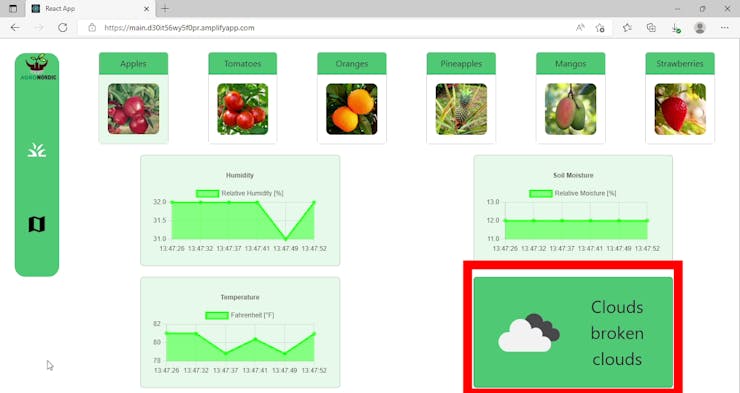
Going Green: Solar Power:
This device has to have a solar panel to reduce the cost of infrastructure.
We recommend that you use at least a 2.5W Solar panel (I tried on a 2W panel and failed, it got very low power and lifetime) in tandem with a LiPo Battery like in the following circuit:
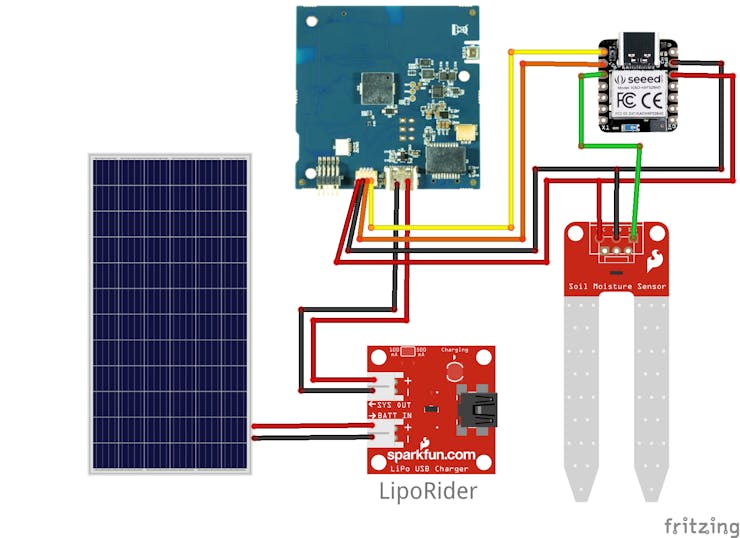
The power segment of the circuit is intended to power the circuit via a Solar Power during the day and then charge the LiPo battery so it can continue working at night.
For this purpose you can see the Regulator in the image that is a connection module that regulates the LiPo battery charge and the Solar Panel feeding energy to the system.
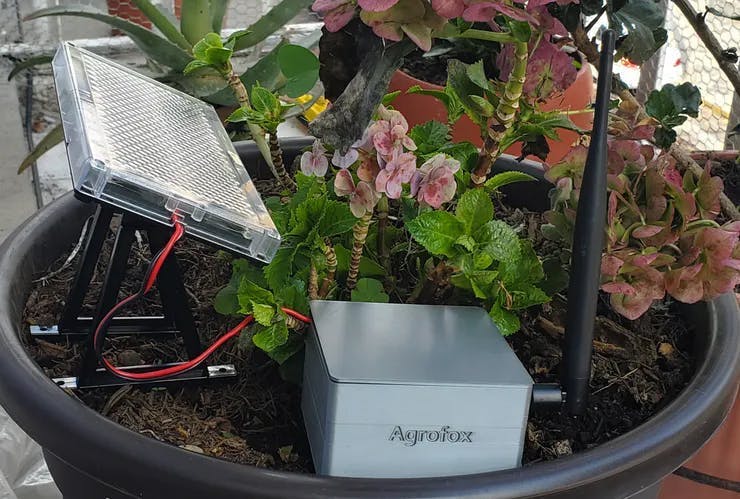
The Sigfox version of the project, the same can be done with the Thingy53.
As previously stated I tried with my small 2W panel, but we are in the rainy season where I live so we need a bigger panel. I urge someone who already has the bigger panel to try it. For the Demo I will be using a Battery. BE very wary when trying this setup, I would go to battery just to be sure and by the way it will be an external one, because for it to work with the AA it may, you have to destroy a resistance.
Here are some reccomended links to these components:
Sunny Buddy: https://www.sparkfun.com/products/12885
Lipo Rider pro: https://www.seeedstudio.com/LiPo-Rider-Pro-p-992.html
Solar panel: https://www.seeedstudio.com/2-5W-Solar-Panel-116X160.html
Now its time to upload the code into your dev board! (If you have already input your credentials properly beforehand, if not go to the next step). Get everything into their cases (3D CAD models provided).
At this point we have the two "Things" of our AIoT solution that sense and actuate
Build Some Cases!
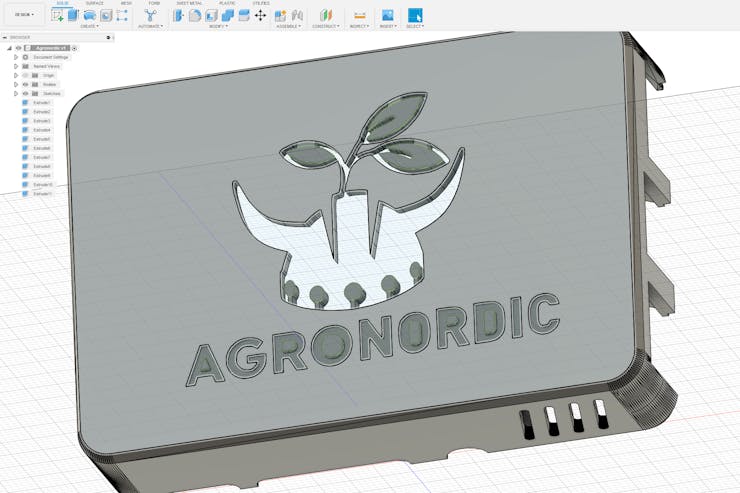

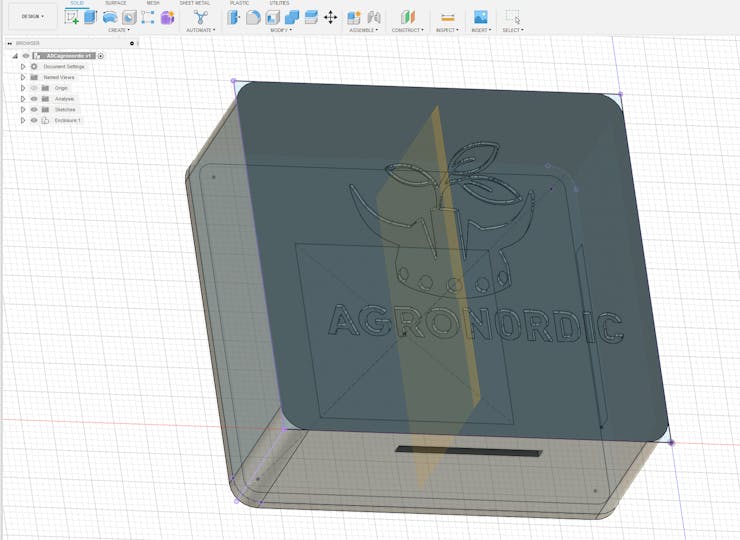
for the ADC
Final Product:
Here is the final version of the complementary sensor:
Thingy53 Valve:
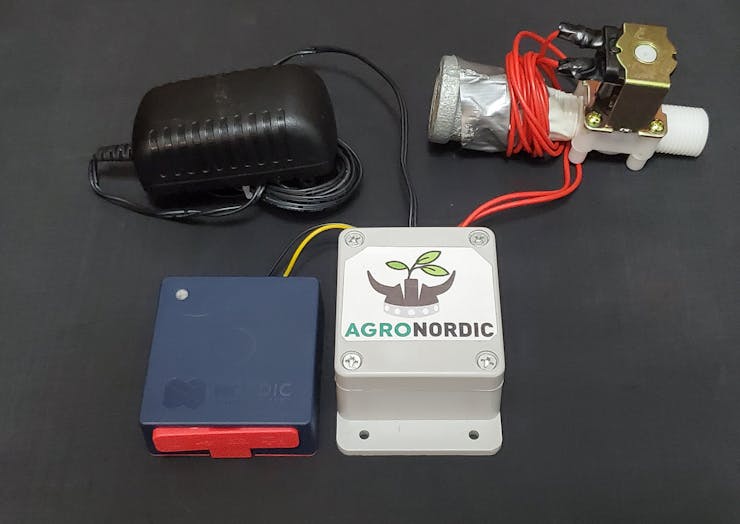
On Site:
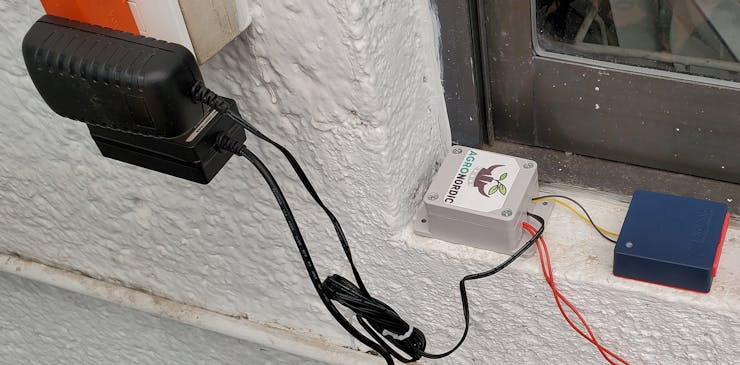
Thingy53 Sensors:

On Site:

RPi Gateway:
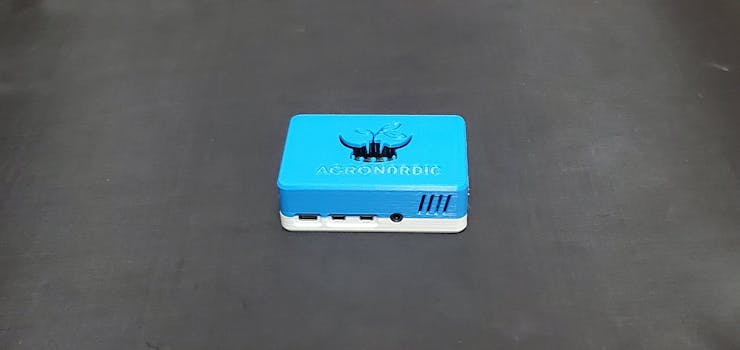
On Site:
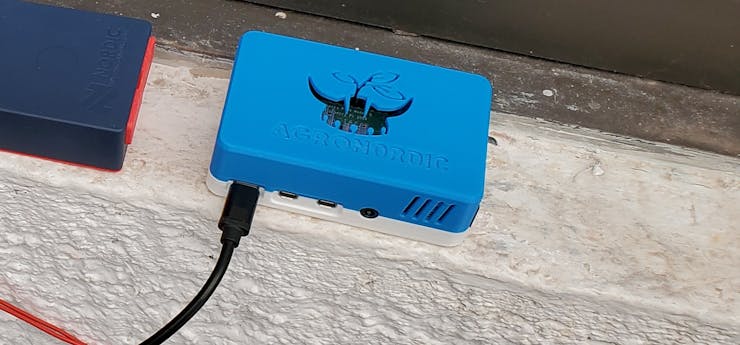
Full Solution:

FINAL DEMO:
Benefits and Sustainability:
As long as we can push initiatives like this forward we can get:
Reduction in Carbon emmisions The average meal has traveled 4, 200 miles just to get to your table. Urban agriculture helps consumers reduce their “foodprint” by providing them the opportunity to purchase food that was grown within their community. Creating Jobs These farms create opportunities to involve the community. Urban farms create jobs (and volunteer) opportunities in big cities, where poverty and hunger are often persistent issues. Stimulates your local economy which also builds the community around. An increase in small businesses stimulates local economy and supports the community by creating jobs right where people live. Healthcare.- Bringing nutritious food to local communities has many direct health benefits, including reducing the risk of harmful conditions like heart disease, obesity, diabetes, and more. Food quality.-These farms preserve biodiversity by cultivating heirloom varieties or those with lower shelf-stability. The proximity and connectedness to market allows for fresh, nutritious produce to become available to communities that have never had access to this in the past. Green spaces: This contributes to the health of city ecosystems in a variety of ways. Greenery adds aesthetic appeal, reduces runoff from precipitation, provides restful spaces for the community, and counters the heat island effect by fixing carbon.
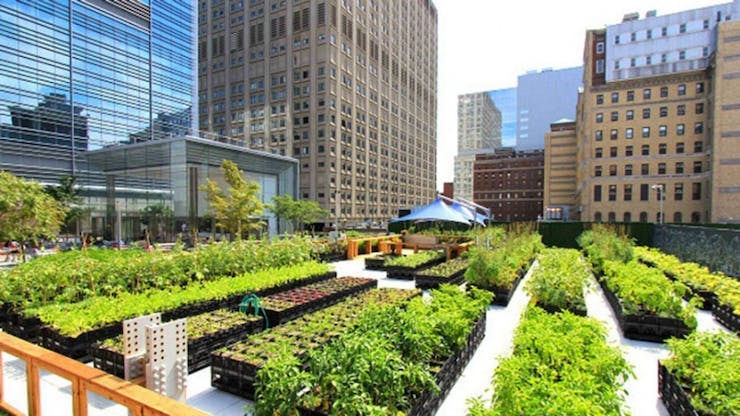
Commentary and Future Rollout:
Sustainable disruption is needed because current methods are insufficient for the rising demand, infrastructure is costly and most fields are in remote areas. Also despite what it promises urban agriculture needs a cheap and readily available solution, for it to be sustainable. And COVID-19 just came to aggravate this situation even more.
The current project offers an initial solution to these problems by starting with one of my own, but it is not difficult to see how one of these can expand. This offers a cheap and affordable solution that can serve the local, home or urban farmer as it can automate several of their processes and most important of all provide valuable information about their crops that they can use to make good decisions.
Naturally we now have this kind of solution now with different and diverse communication protocols, from LoRa using the Helium Network to WiFi and now this one through Nordic using BLE and a gateway that connects to two different kind of Thingy 53 applications. One to Sense and one to actuate. If offers huge versatility and configurability options through this setup. With these kind of solutions the urban farmer can choose which kind f solution suits best but for the home farmer this BLE - Nordic setup offers perhaps the better combo.
Custom parts and enclosures
Gatewaybottom
The bottom part of the gateway case. Heavily influences by Malolo's design: https://www.thingiverse.com/thing:3723561/files
All credit and rights go to him. (user: Malolo)
ADCcase top
The upper part of the ADC case
ADCcase bottom
The bottom part of the ADC case.
Gatewaytop
Top part. This is take 100% from https://www.thingiverse.com/thing:3723561/files
All credit and rights go to him. (user: Malolo)
Schematics
System Diagram with services.
This is the system's architecture.
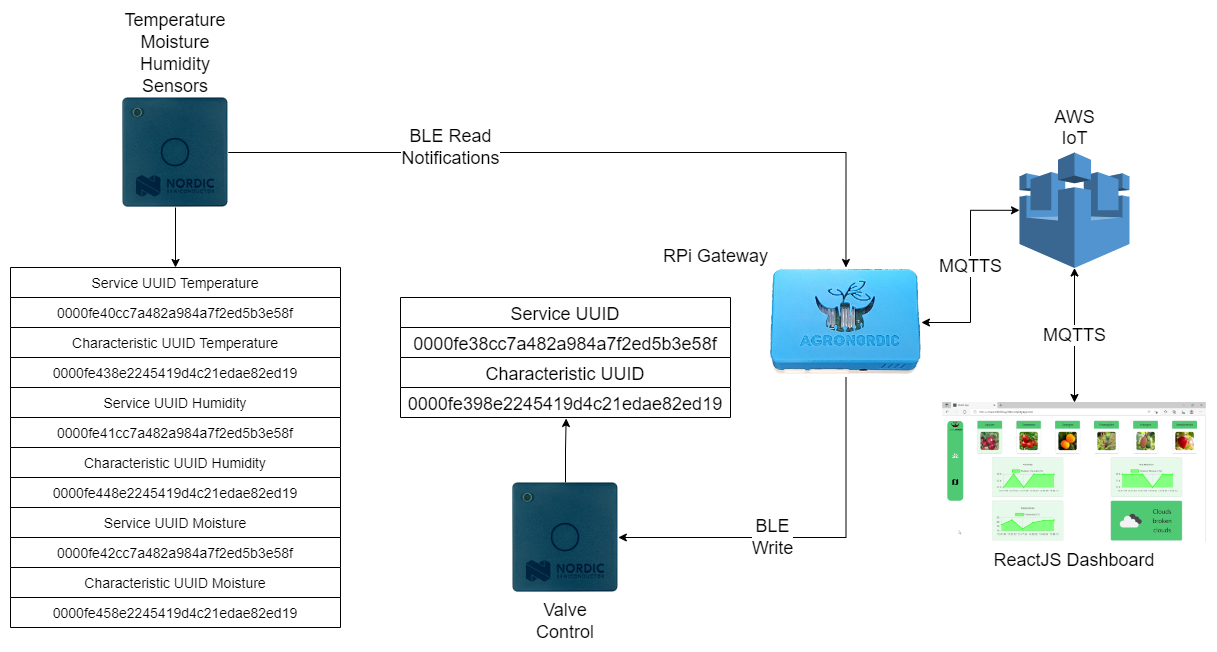
Sensing Diagram
Nordic's Thingy:53 sensing hack
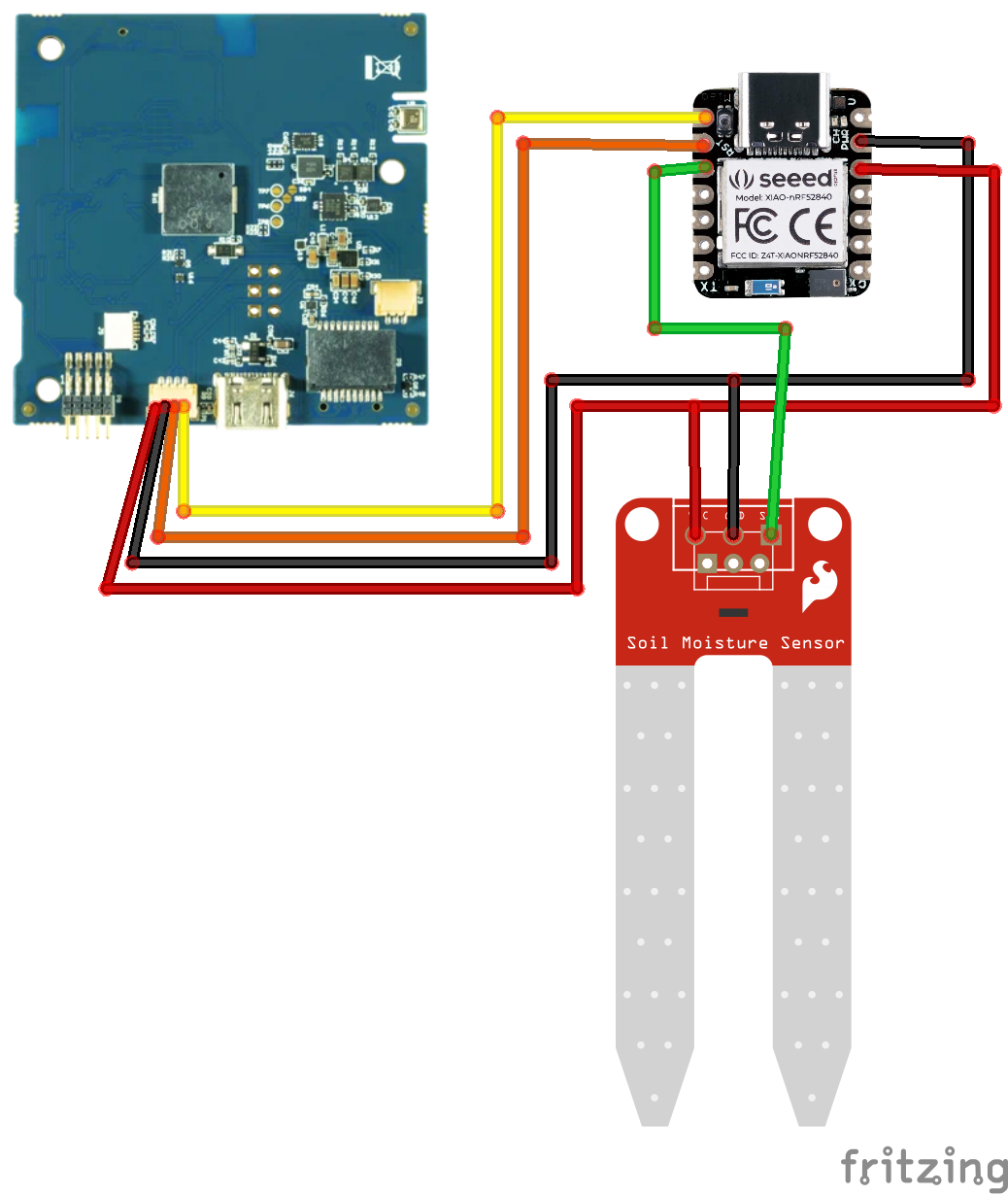
Actuating Diagram
Thi is the diagram related to the valve application.
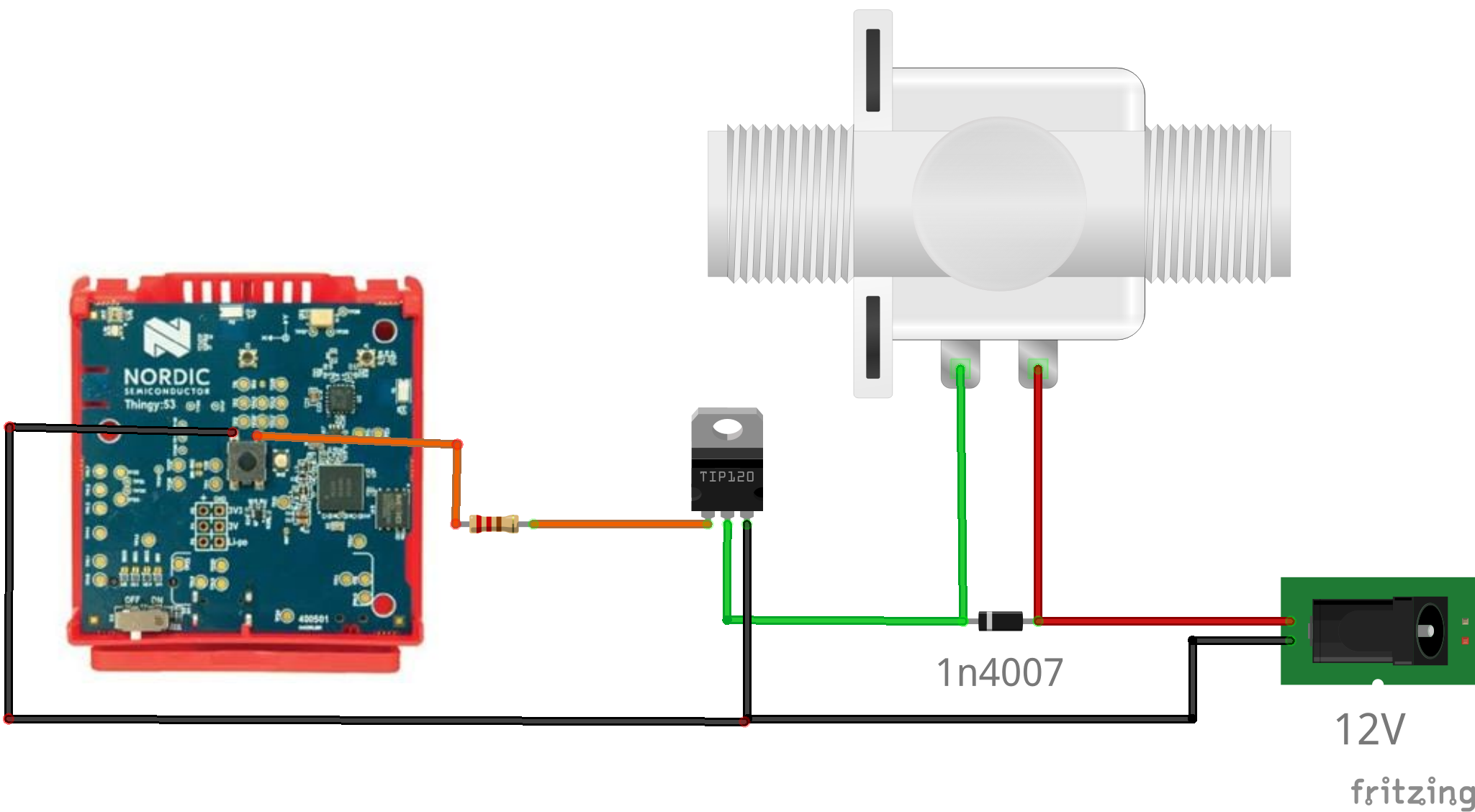
The article was first published in hackster, October 1, 2022
cr: https://www.hackster.io/Edoliver/agronordic-69949d
author: EdOliver, Victor Altamirano, Alejandro Sanchez










